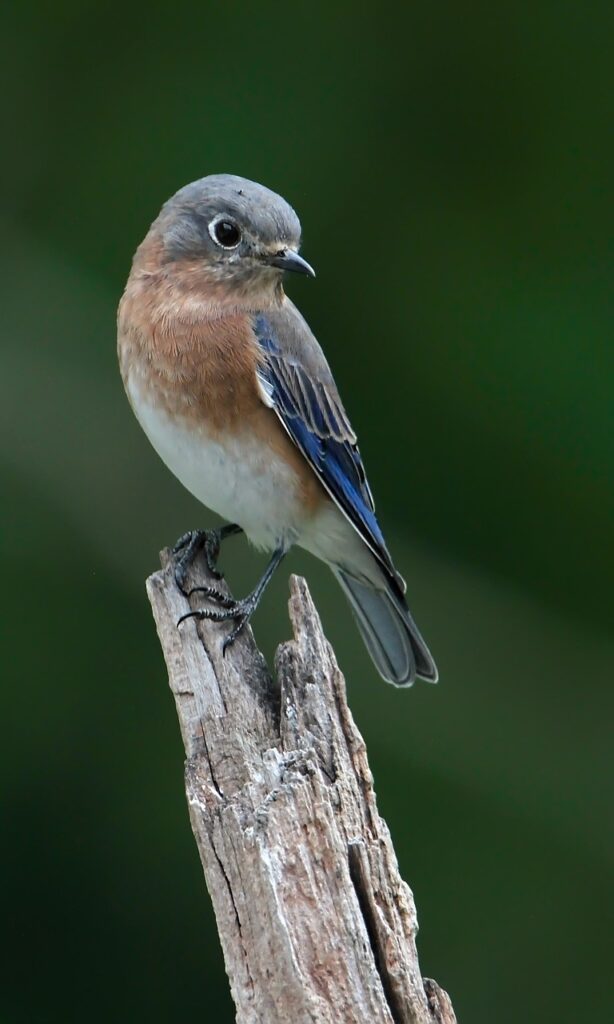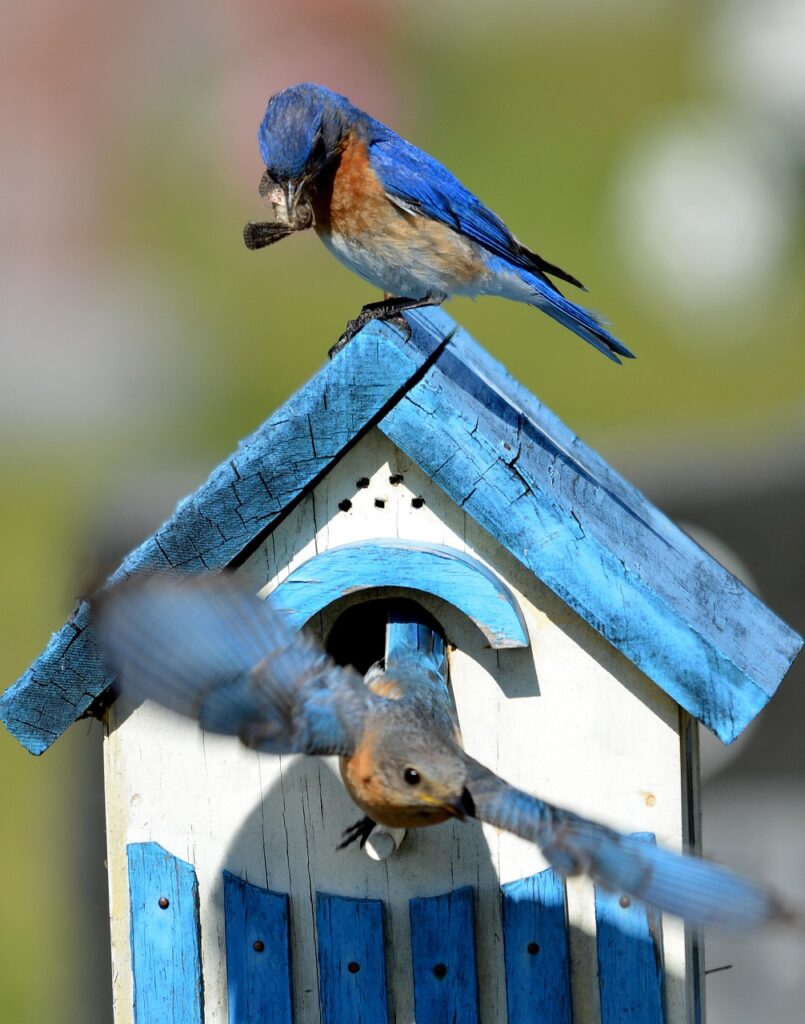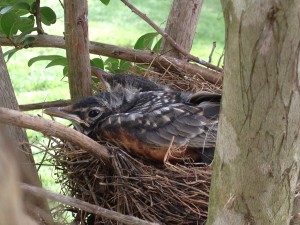
 The Eastern bluebird is a small, bright songbird known for its vivid colors and sweet, warbling call. Male Eastern bluebirds are easy to recognize with their brilliant royal blue on the back and head and warm reddish brown on the throat and chest. Females are grayer and duller than the males. Eastern Bluebirds live across eastern North America and as far south as Nicaragua.
The Eastern bluebird is a small, bright songbird known for its vivid colors and sweet, warbling call. Male Eastern bluebirds are easy to recognize with their brilliant royal blue on the back and head and warm reddish brown on the throat and chest. Females are grayer and duller than the males. Eastern Bluebirds live across eastern North America and as far south as Nicaragua.
Diet
Eastern Bluebirds can be found in open country with scattered trees and vegetation, such as farms, old fields, burned areas, meadows, forest clearings, roadsides, and golf courses. They are often seen sitting in trees, along fences, or on power lines as they search for insects. Once an insect is spotted, the bluebird drops to the ground to capture it. They may even catch insects in midair.
Besides insects, bluebirds eat snails, spiders, and earthworms. They supplement their diet with berries in the summer and fall. Because of this, bluebirds are rarely seen at bird feeders filled with seeds.
Nesting
The Eastern bluebird is a secondary cavity-nesting species. This means it reuses cavities and holes created by larger birds, such as woodpeckers. Bluebirds also use artificial nest boxes that people build for them. These boxes should have a guard to keep out predators that might harm the eggs and young, like raccoons, cats, opossums, and snakes.
larger birds, such as woodpeckers. Bluebirds also use artificial nest boxes that people build for them. These boxes should have a guard to keep out predators that might harm the eggs and young, like raccoons, cats, opossums, and snakes.
Before mating, the male bluebird searches for a suitable nesting site. Once he finds one, he displays it to attract a female. He does this by going in and out of the cavity and bringing in nesting material. He then perches above the opening and quickly waves his wings. If a female accepts the site, she builds a nest inside. She uses grass, pine needles, hair, and other soft materials.
Bluebirds lay two to seven eggs at a time, usually raising two broods per season. Both the father and mother help feed the nestlings. Sometimes young birds from earlier broods help too. Baby birds that hatch earlier in the year leave their parents in the summer. Those that hatch later often stay with their parents over the winter.
By learning more about these colorful songbirds—and even putting up a nest box—you can help these beautiful birds while enjoying their cheerful presence near your home.










